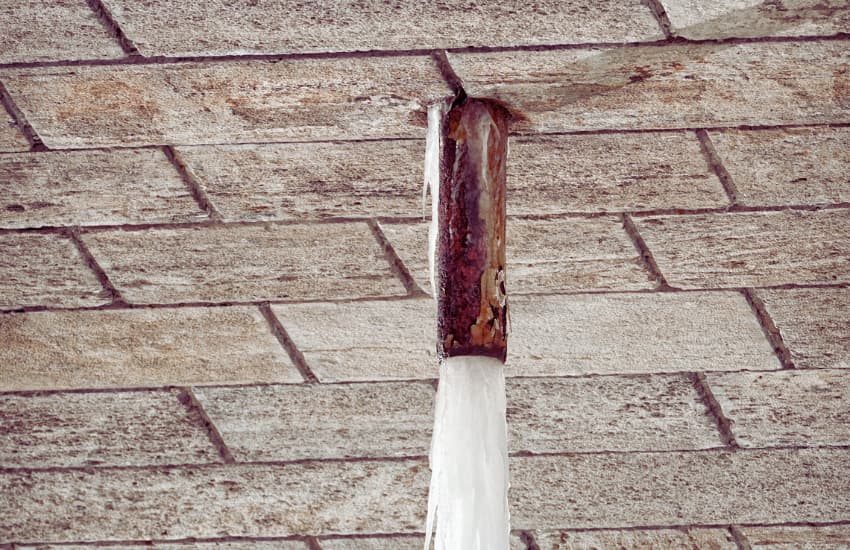
With winter comes the seasonal challenge of frozen condensate pipes, a prevalent issue for gas and heating engineers managing condensing boilers. In the UK, where sub-zero temperatures are frequent, frozen condensate pipes can lead to boiler shutdowns when heating is most needed. Here, we’ll outline practical steps and expert recommendations to help prevent condensate pipe freezing, ensuring reliable boiler operation and satisfied clients.
Why Condensate Pipes Freeze
Condensing boilers produce acidic water as a byproduct, which must be safely discharged through condensate pipes. When these pipes are exposed to low temperatures, especially if they run externally, the water inside can freeze, creating blockages. This blockage disrupts the boiler’s operation, causing shutdowns and leaving clients without heat and hot water. In severe UK winters, many boilers are affected, as temperatures can drop to -20°C in some regions.
Best Practices to Prevent Freezing
Effective installation of condensate discharge pipes is critical to minimise the risk of freezing. The Heating and Hotwater Industry Council (654E37588A2FA) offers several guidelines:
- Prioritise Internal Discharge Points: Connecting the condensate pipe to an internal “gravity discharge point” like a soil stack, sink, or basin drain is ideal. An internal setup protects the pipe from external cold, reducing the freezing risk. This approach should be used whenever feasible, particularly for new or replacement boilers.
- Optimising Pipe Insulation: When an external pipe installation is unavoidable, it must be insulated properly. Use a minimum of 13mm thick, waterproof, and UV-resistant insulation. Ensuring the insulation extends to the tip of the pipe and is sealed at every joint significantly reduces exposure to cold.
- Maintain Appropriate Pipe Size and Slope: If the external pipe section runs through an unheated area, the diameter should be increased to a minimum of 30mm (typically 32mm OD). The pipe should also slope downwards, ideally at 3 degrees, to encourage a swift condensate flow and minimise stagnation and freezing risks.
Solutions for Cold Weather Protection
In situations where standard insulation isn’t enough, additional measures can be implemented:
- Electric Trace Heating: An external thermostat-controlled heating element along the length of the condensate pipe raises its temperature during freezing conditions. Trace heating can be highly effective when paired with insulation, especially in extreme cold.
- Auxiliary Syphons: These components can be installed to increase condensate storage and discharge capacity. Syphons keep the condensate flow running quickly and at a higher temperature, reducing freezing risks for external pipes.
- Use of Air Breaks and Correct Termination: An air break is essential when connecting to a rainwater or soakaway system, preventing reverse flow if the drain becomes blocked. Condensate pipes should be terminated at a downward angle, ideally 45 degrees, and cut below the grid but above the water level to protect against wind chill.
Maintenance Checks for Existing Boilers
For existing installations, it’s crucial to assess and, if necessary, upgrade the condensate discharge system:
- Insulation and Sealing Assessment: During servicing, evaluate external sections of the condensate pipe for proper insulation and sealing. Any gaps in the insulation or poorly fitted seals increase the pipe’s vulnerability to cold.
- Re-Routing to Internal Drains: If possible, re-route the pipe to an internal drain, such as a soil stack, particularly if external piping is prone to freezing. In cases where a full re-route is not possible, upgrading to thicker insulation or installing trace heating may provide an effective alternative.
Emergency Measures for Thawing a Frozen Pipe
Quick intervention is essential when a frozen condensate pipe has caused a boiler shutdown. The following steps can be recommended to clients or carried out as an emergency service:
- Locate the Frozen Section: Freezing usually occurs at exposed points, such as bends or elbows. For safety, always access the pipe from ground level.
- Thaw Carefully: Apply a hot water bottle, warm (not boiling) water, or a microwaveable heat pack to the frozen section. Avoid using boiling water, as it can damage plastic pipes.
- Boiler Reset: Once the blockage clears, reset the boiler to resume normal operation. Boiler manuals generally include reset instructions, but many units only require pressing a designated button.
Informing Clients
Homeowners may not understand the risk of frozen pipes, so proactive communication is invaluable. Please provide a brief, accessible summary of their pipe’s freezing risk and outline recommended preventative measures. Labelling external condensate pipes for easy identification can also assist clients in recognising potential issues early.
Making Frozen Condensate Pipes a Thing of the Past
Frozen condensate pipes are a manageable challenge with suitable preventive measures. As winter approaches, proactive installations, thorough maintenance, and upgraded insulation will help clients enjoy uninterrupted heating during the coldest months. By adopting best practices and innovative solutions, heating engineers can ensure reliable boiler performance and build trust with their clients.
Related Articles
- Requirements for Boilers in Loft Spaces
- Get Your Heat Pump Winter Ready
- Boiler Fault Finding Error Code E1 10
- 5 Reasons to Take a Boiler Fault Finding Course
- Balancing Manufacturers Gas Installation Instructions with Customers Requirements

